Watergrass (Echinochloa spp.) is the most competitive weed complex in California rice production. These plants can emerge under both continuously flooded and flushed conditions, often resulting in significant yield losses—up to 100% in dry- or drill-seeded systems, and about 50% in water-seeded systems, when no herbicides are used. Watergrass was also one of the first weed groups to develop herbicide resistance in the early 2000s. This resistance is metabolic, meaning the plants break down or "consume" the herbicide before it can take effect.
Currently, four primary watergrass species are found in California rice fields: barnyardgrass (Echinochloa crus-galli), early watergrass (E. oryzoides), late watergrass (E. phyllopogon), and coast cockspur (E. walteri). Coast cockspur is a relatively new addition, first identified in California rice fields in 2017. It is a robust species with thick stems and can grow over 6 feet tall if left unmanaged. All four species exhibit some degree of herbicide resistance, and resistant biotypes have been documented throughout all counties of the Sacramento Valley.
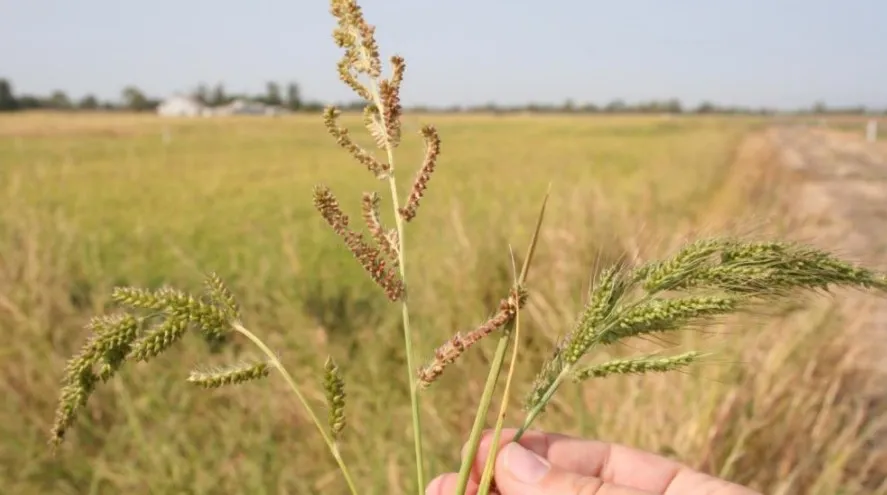
Figure 1: Late watergrass (L), barnyardgrass (C), and early watergrass (R)
Watergrass Control and Propanil Resistance Management
Over the past few years, we've faced growing challenges in managing watergrass, leading many growers to rely on double applications of propanil. However, this approach is contributing to the development of propanil-resistant biotypes, threatening the long-term effectiveness of this product for grass control.
To slow the development of resistance and preserve propanil’s utility, we recommend the following strategies:
- Rotate herbicide modes of action — avoid using propanil as a clean-up spray year after year.
- Use tank mixes — combine propanil with other herbicides for clean-up applications rather than using it alone.
Our team has been actively researching tank mix alternatives to double propanil applications over the past few seasons, and we’ll continue this work into 2025. Our goal is to support growers and Pest Control Advisors with practical, sustainable options for effective watergrass control.
Alternatives to the Double-Propanil Application (2023)
In 2023, we conducted watergrass field trials at five locations in Butte County. Watergrass populations were high in all fields except the one at the Rice Experiment Station, which was applied as a control to confirm phytotoxicity. All varieties were Calrose medium-grain. The herbicides tested were Stam 80DF® (propanil), Abolish® (thiobencarb), Shark H2O® (carfentrazone), Loyant® (florpyrauxifen-benzyl), Clincher CA® (cyhalofop-butyl), Regiment® (bispyribacsodium), and Sandea® (halosulforon) (Table 1). Applications were made at 35-40 DAS, at 20 gallons per acre spray volume.
Weed control (% control, watergrass only) and phytotoxicity (% Stunting, % Stand reduction, % Tip Burn) evaluations were made 7 Days After Application (DAA), 14 DAA, and 21 DAA. Fields were harvested in September 2023. Yields were lower than normal due to hand-harvesting as well as rice laying down flat in the water at harvest in a couple of the fields.
Table 1: Treatments applied in 2023 field testing (applied at 35-40 days after seeding) for watergrass control.

Results (2023)
Results (averaged across the 5 locations) indicate that Regiment® followed by Stam® (9), and Stam + Abolish® (4) are good candidates for watergrass control. Those 2 treatments showed great watergrass control and high yields (Figures 3 and 4). Additionally, only mild phytotoxicity was observed throughout the duration of the trial for the treatment (Figure 2). Treatments that are not quite as good in grass control but good in a rotation include Stam® + Loyant® (6), Stam® + Shark® (5), Regiment® + Clincher® (11), and Stam® + Clincher® (7). These treatments resulted in lower rice yields and less effective watergrass control compared to treatments 9 and 4 (Figures 2 and 3). They also caused some phytotoxicity, with Stam® + Shark® (5) causing significant tip burn at the 7 days after application evaluation (Figure 2). In these treatments, Stam® can be substituted with SuperWham®.
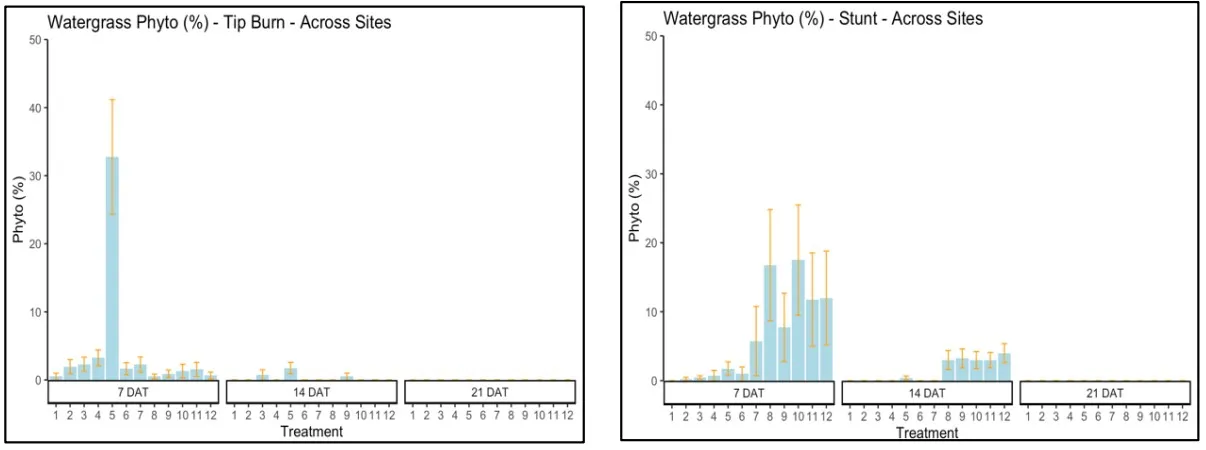
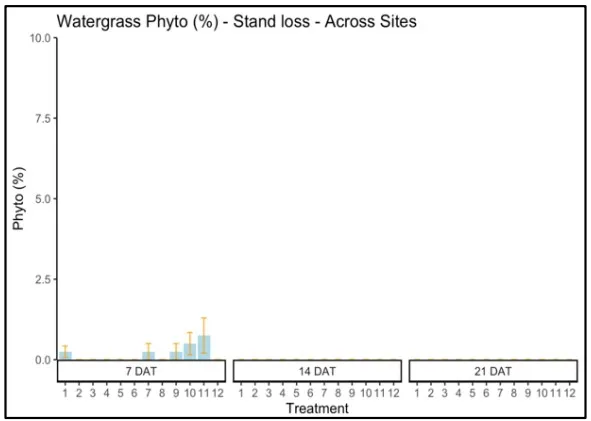
Figure 2: Phytotoxicity (Tip Burn, Stunting, and Stand Loss) in 2023 field testing (7, 14, and 21 Days After Application) averaged across all 5 sites.
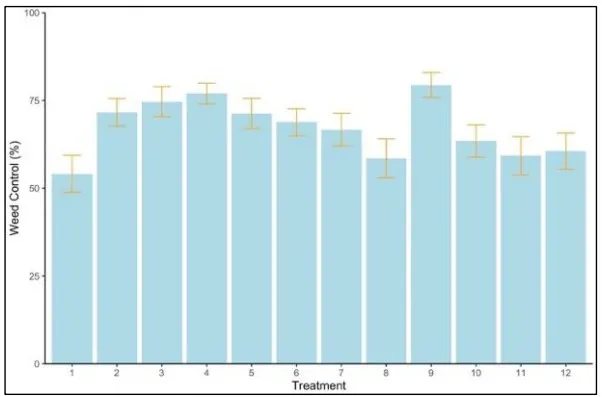
Figure 3: Percent watergrass control (%) (Treatments 2-12) compared to the untreated control (Treatment 1) in 2023 (21 Days After Application). Treatment 1 (Untreated) is the percent watergrass cover per plot, not the percent control. Averages are across 4 sites (Rice Experiment Station was not included due to low watergrass populations).
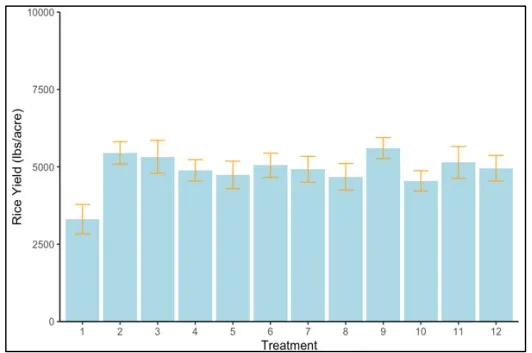
Figure 4: Rough rice yields (lbs/acre) for 2023 watergrass field testing averaged over the 5 locations.
Alternatives to the Double-Propanil Application (2024)
In 2023, we conducted watergrass field trials at five locations in Butte County (2), Yuba County (1) and Sutter County (2). Watergrass populations were high in all fields except the one at the Rice Experiment Station, which was applied as a control to confirm phytotoxicity. All varieties were Calrose medium-grain. The herbicides tested were Stam 80DF® (propanil), Abolish® (thiobencarb), Shark H2O® (carfentrazone), Loyant® (florpyrauxifen-benzyl), Clincher CA® (cyhalofop-butyl), Regiment® (bispyribac-sodium), and Cliffhanger® (benzobicyclon) (Table 2). Applications were made at 35-40 DAS, at 20 gallons per acre spray volume.
Weed control (% control, watergrass only) and phytotoxicity (% Stunting, % Stand reduction, % Tip Burn) evaluations were made 7 Days After Application (DAA), 14 DAA, and 21 DAA. Fields were harvested in September-October 2024.
Table 2. Treatments applied in 2024 field testing (applied at 35-40 days after seeding) for watergrass control.
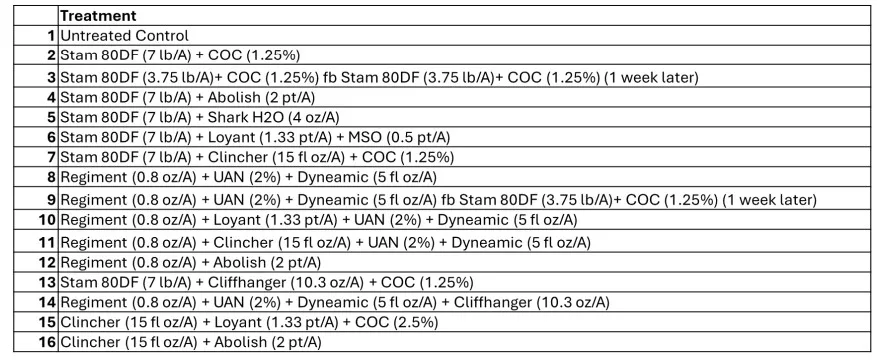
Results (2024)
Results (averaged across the 5 locations) indicate that Regiment® followed by Stam® (9), and Stam + Clincher® (7) are good candidates for watergrass control. Those 2 treatments showed great watergrass control and high yields (Figures 6 and 7). Additionally, only mild phytotoxicity was observed throughout the duration of the trial for these treatments (Figure 5). Treatments that are not quite as good in grass control but good in a rotation include Stam® + Shark® (5), Stam® + Abolish® (4). These treatments resulted in less effective watergrass control compared to treatments 9 and 7 (Figures 2 and 3), but yields were similar. In these treatments, Stam® can be substituted with SuperWham®.
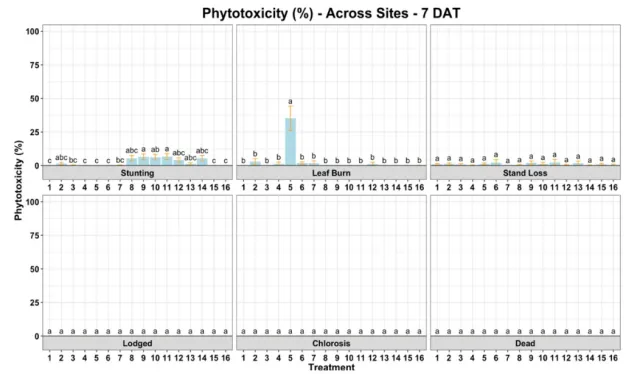
Figure 5: Phytotoxicity (Tip Burn, Stunting, and Stand Loss) in 2024 field testing (7 Days After Application) averaged across all 5 sites.
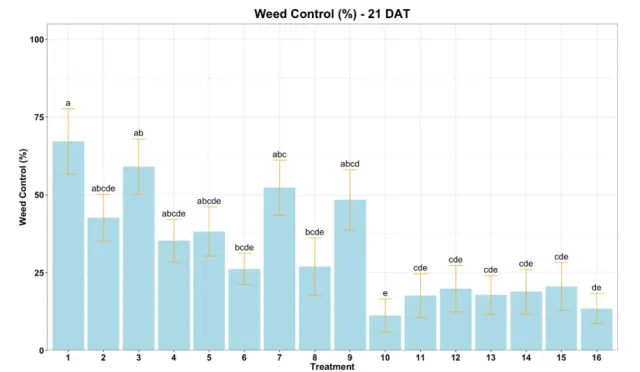
Figure 6: Percent watergrass control (%) (Treatments 2-16) compared to the untreated control (Treatment 1) in 2024 (21 Days After Application). Treatment 1 (Untreated) is the percent watergrass cover per plot, not the percent control. Averages are across 4 sites (Rice Experiment Station was not included due to low watergrass populations).
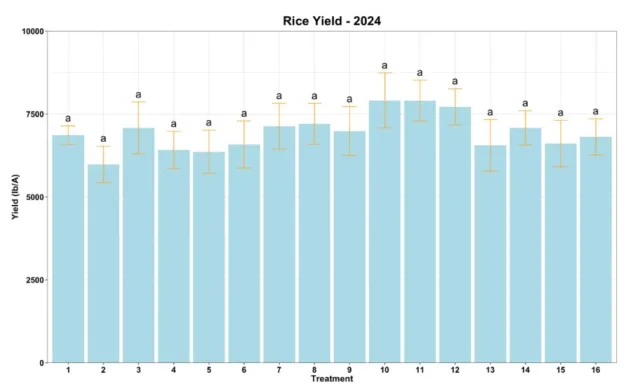
Figure 7: Rough rice yields (lbs/acre) for 2024 watergrass field testing averaged over the 5 locations.
Recommendations:
To effectively manage tough watergrass, growers should use integrated weed management where possible. This includes:
- Using combinations of chemicals (granular) and tank-mixes (foliar)
- Rotating chemistries at the beginning of the season
- Rotating clean-up herbicides
- Crop rotation or fallow
- Winter flooding to maximize seed predation and decomposition over the winter
- Resistance testing through the UC Rice Weed Science Program
Herbicide recommendations include (at the beginning of the season):
- Zembu® (pyraclonil) if other granular options are ineffective, to give other chemistries a break. Zembu® suppresses grass (does not control) but will help prevent the selection of resistance as it is a new mode of action for watergrass.
- Cerano® followed by Butte® or Cliffhanger®, applied one week apart, is effective even on tough grass. In red soils, this may be a phytotoxic combination, and rates may need to be reduced.
- Implement a stale seedbed approach by applying glyphosate or Suppress® (capric/caprylic acid) pre-plant as a rotational tool. o Please check in with Farm Advisors for guidance on timing
- Pendimethalin (Harbinger®, Prowl H2O®, and others) to rotate MOA in a drill- or dry-seeded system (please follow the label for each product’s timings and rates)
Foliar options (best grass control) (see above tables for rates and adjuvants used):
- Regiment followed by Stam®/SuperWham® (may cause injury on certain specialty varieties)
- Tested at 1 week apart, other spacings may be better, we will be evaluating in 2025
- SuperWham®/Stam® + Clincher (not as good in 2023)
- Abolish® + SuperWham®/Stam® (not as good in 2024)
Foliar options (good grass control) (see above tables for rates and adjuvants used):
- SuperWham®/Stam® + Loyant®
- SuperWham®/Stam® + Shark H2O® (some phyto)
- Regiment® + Clincher®
Not all of these treatments will work on all watergrass biotypes and fields. However, trying a new combination, even on one or two fields or one or two individual checks, will help growers and PCA’s to evaluate the efficacy of these treatments and prevent selection for propanil resistance on your farm or ranch.
Continued Testing Planned for 2025:
In 2025, UC Advisors will continue testing herbicides for watergrass control across the valley, with new tank mix combinations, as well as different timings for sequential applications.
Note: Remember to always check the label and with the local Agricultural Commissioner’s office for relevant restrictions and permit conditions. The label is the law.
*Disclaimer: UC does not endorse any particular brand/product but uses brand names for audience familiarity with our research and content. Stam 80DF and SuperWham (a.i. propanil), Abolish (a.i. thiobencarb), Shark H2O (a.i. carfentrazone-ethyl), Loyant (a.i. florpyrauxifen-benzyl), Clincher (a.i. cyhalofop-butyl), Regiment (a.i. bispyribac-sodium), Sandea (a.i. halosulfuron-methyl), Cerano (a.i. clomazone), Suppress (a.i. capric/caprylic acid), Zembu (a.i. pyraclonil).

